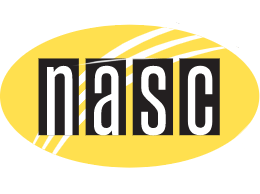Xylitol For Dogs: Where This Toxic Additive Is Hiding

As a dog owner, you know that there are certain foods that are fine for us but harmful for our dogs. Did you know that xylitol is on that list?
Xylitol isn't so much a food as a food additive and it’s found in all kinds of products …
… and it can be deadly for your dog.
So how do you protect your dog from xylitol ... whatever that is exactly?
What Is Xylitol?
Xylitol is a natural alcohol found in most plant material, including many fruits and vegetables that we love to eat. In our food, it's used as a sweetener and is often referred to as a sugar alcohol. It’s a great sugar substitute for people with diabetes since it looks and tastes like sugar but has 40% fewer calories.
It’s also good for our teeth.
Thanks to its low glycemic index and dental benefits, xylitol has become increasingly popular over the last decade. That means most people have items with xylitol in them at home.
And that’s all the more reason to be aware of it and why you need to keep it away from your dog.
Why Is Xylitol Toxic To Your Dog?
It’s all about insulin. In both humans and dogs, the pancreas controls the level of sugar in the blood. It does this by releasing insulin in response to rising glucose in the bloodstream.
Here's where the danger lies...
Humans absorb xylitol slowly so it has no measurable effect on insulin production. But it's different with dogs.
When a dog eats xylitol, it gets rapidly absorbed into the bloodstream and the body starts producing large amounts of insulin. That’s because the body thinks it has ingested glucose. This rapid release of insulin can trigger a significant decrease in the blood sugar level of your dog (hypoglycemia). And it can happen quickly, within 10 to 60 minutes.
How much xylitol does your dog need to eat to be at risk? Studies show that the dose that can cause hypoglycemia is more than 0.1 g/kg. The more your dog eats, the higher the risk of liver failure. And if left untreated, hypoglycemia can be life-threatening to your dog. So can the effects on the liver.
Symptoms And Treatment
There are certain things you can look for if you’re concerned about xylitol and hypoglycemia. The symptoms of xylitol poisoning in dogs include:
- Vomiting
- Decreased activity
- Depression
- Weakness
- Staggering
- Loss of coordination
- Seizures
If you think your dog has eaten xylitol, rub maple syrup on your dog’s gums to help increase your dog’s blood sugar and then head to your holistic vet right away.
Canine herbalist Rita Hogan also recommends the following supplements to help protect the liver. You need to administer them right away and for 1 month afterwards:
- SAMe (S-Adenosyl Methionine) – give 85 mg for every 15 pounds of body weight right away.
- Milk thistle – start with tincture to get it to absorb quickly. Within an hour of exposure give 10 mg for every 15 pounds. Continue with this for 4-6 weeks. Give 15 ml for every 30 pounds, 2 times daily. You can give this in powdered form. Milk thistle contains lignins that protect the liver.
- Turmeric is an antioxidant that helps filter the blood and remove toxins. It works well with milk thistle extract after you regulate your dog’s blood sugar. The curcumin in turmeric is hard for your dog to absorb if it’s given by itself. Combine turmeric with a healthy oil like MCT oil to increase absorption. Start with about ¼ to ½ tsp, depending on the size of your dog.
Your vet will do an exam with blood tests to determine what the best treatment is. This is usually based on how much xylitol your dog ate, how long ago and any other medical concerns.
Next you have to start re-regulating blood sugar levels. This may include giving glutathione, a protein made up of amino acids and a powerful antioxidant. Glutathione will give the liver a boost, allowing it to better detoxify after the xylitol.
Careful monitoring of blood levels until they return to normal is really important.
The issue with xylitol poisoning is that liver failure can develop up to 3-4 days after you have your dog treated for low blood sugar. It’s thought that this is from the stress on the liver when the blood sugar drops. That’s why you want to make sure you continue to cleanse and support the liver even after you bring your dog home.
Where Xylitol Is Hiding In Your Home
Your best defense against xylitol as a dog owner is knowing which products have it as an ingredient. Read the labels on your food and common household products.
Here’s a list of common household items and popular foods containing xylitol:
Medications
- Nasal sprays
- Vitamins
- Fiber supplements
- Compounded medications
- Cough drops
Dental Health Products
- Toothpaste, mouthwash, floss
- Chewing gum and mints
- Pet toothpaste (what!?)
Personal Care Items
- Baby wipes and diapers
- Nose and face wipes
- Makeup and makeup remover
Foods
- Drink powders
- Instant coffee
- BBQ sauce and ketchup
- Candy and chocolates
- Peanut butter, jam, pancake syrup
- Baked goods
- Pudding
Keeping Xylitol Away From Your Dog
As a dog owner, the number one thing you need to do is keep a close eye on the ingredient lists of products and foods you keep in the house.
And keep those things out of your dog's reach!
To limit potentially toxic xylitol exposure to your dog, you can avoid it altogether. Despite xylitol being extremely toxic to dogs, it seems to be popping up all over the place. So that can make avoiding it very difficult.
Thankfully, you can still take precautions to prevent your dog from eating anything with xylitol.
- Make sure that all products are safely stored out of your dog's reach.
- Start checking for xylitol when you’re out shopping for yourself – and don’t buy those products.
- If you're the DIY doggie dentist, make absolutely sure that you NEVER use human toothpaste. Use natural pet toothpaste (or make your own).
Every dog owner knows that dogs can be super sneaky. They have a savvy way of sniffing out even the most well-hidden treat, toy, or anything else they think will be tasty. Making sure that xylitol is either safely stored away or completely removed from your home is the best way to prevent your dog from getting into it.
Written By: Chris Barnard
Chris Barnard is the Managing Editor at DentalPatientNews.com, a dental health blog dedicated to enabling the dental health conversation between dentists and patients – and the eradication of the cavity creeps.
Find us in a store near you
Never miss out
Need help? Chat with us





